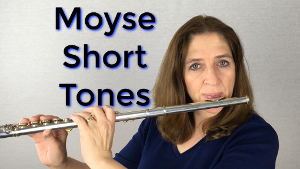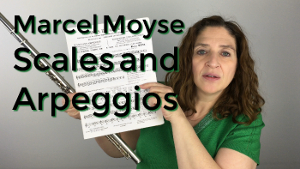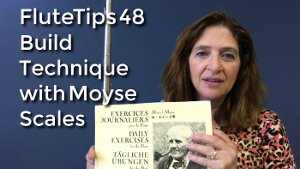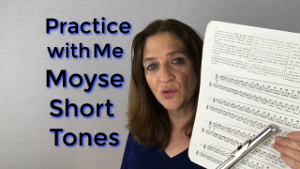The Moyse Short Tones!
Are you one of those people that bow in reverence when the name of Moyse is invoked? If so you are not alone. That man wrote so much that is extremely helpful to us flutists. Trevor Wye says that he was paid to write an exercise book every summer when he was on holiday. That is a lot of books.
I wasn’t brought up on a steady diet of Moyse. I feel like I came to the table late. But when I did enter into the Moyse universe, I discovered so many exercises that could help solve my specific problems. I think that’s why his exercise books are so popular. They reach all of us in our specific problems.
Moyse Reaches Each of Us in Our Own Specific Problems
In this blog I will address one such exercise that revolutionized my playing: the short tones.
This exercise is in the book de la Sonorite. Moyse wrote a nice introduction to this exercise that you should read. It’s well-worth reading through before attempting. If you’ve already done this exercise many times without reading the introduction, stop and read it now. The exercise is very helpful to use for working on attaining brilliance in your upper register. You not only learn to play short notes up there, but to have them resonate with spin. I like to use the word spin when we’re talking about our 3rd octave notes rather than vibrato, because vibrato seems too cumbersome a word to use for this register. Sopranos talk about creating spin in their voice and I think that term works for this register.
When you read through Moyse’s instructions, he indicates 4 ways in which to play these exercises:
- Tongue them all. Keep very short.
- Slur the first note to the upper one. Slurring always from the drone to the next.
- Begin with the second note and slur to the drone.
- Slur all of them.
If you were to play through all 4 without much thought, they would be easy enough to do. It is when you are thinking about putting brilliance on them that they offer something extraordinary. When you work on these you must have extreme support. The only way in which you can make these work for you is to support this high register and use that support to add the spin. It takes a lot of control to work on these they way in which Moyse indicated. However, they yield high results.
When You Work on Short Tones You Must Have Extreme Support
I discovered this exercise over Christmas break one year and diligently worked on it. When I went back to school an oboe player that I performed with in a quintet with asked me what happened. I was a bit mystified until she clarified that I sounded amazingly different. Hey, if an oboist notices, it’s got to be good!
Spin that high register and have fun working on this exercise. I’ll do you tone a world of good!
DoctorFlute
Watch me demonstrate this: FluteTips 53 Moyse Short Tones

FluteTips 95 Marcel Moyse Scales and Arpeggios

FluteTips 72 Rich Expansive Low Register

FluteTips 48 Building Your Technique by Practicing Moyse Scales

Practice with Me Moyse Short Tones

